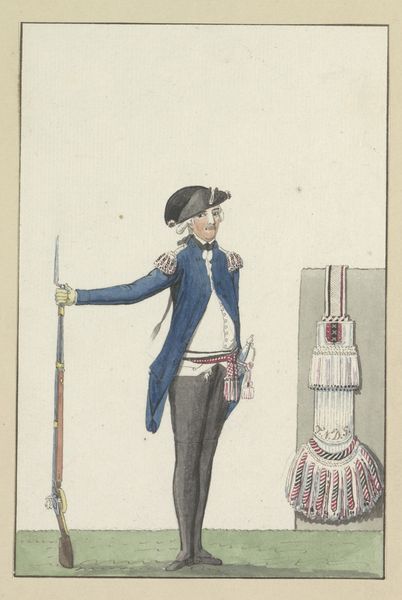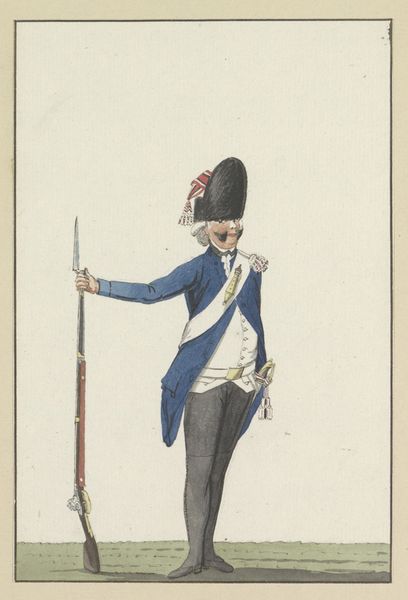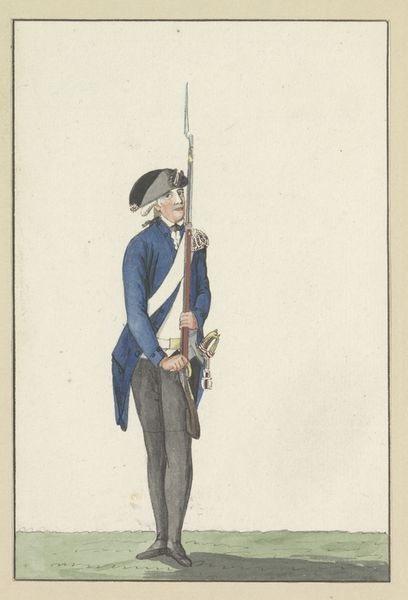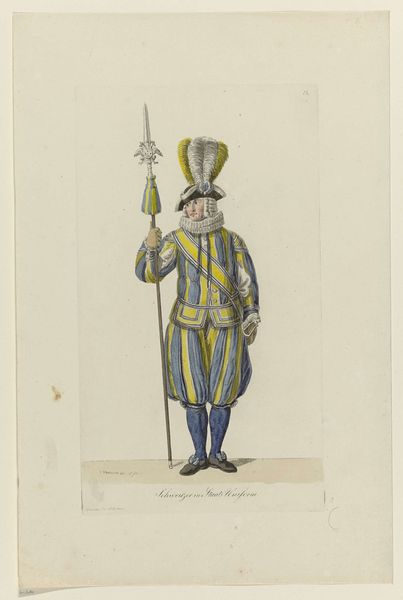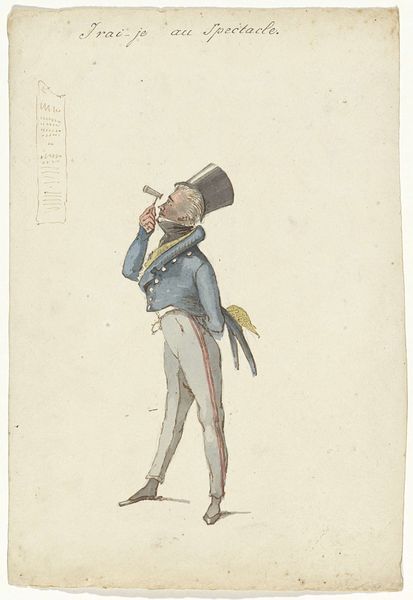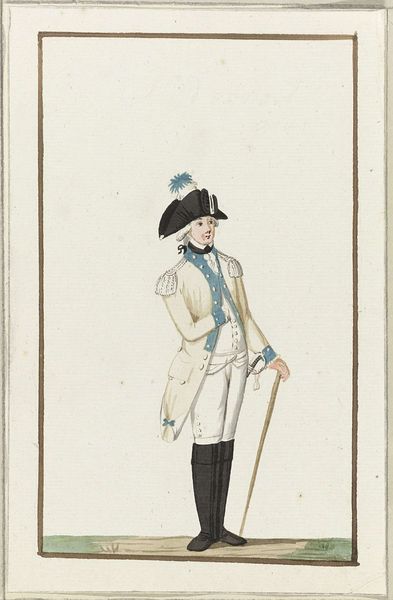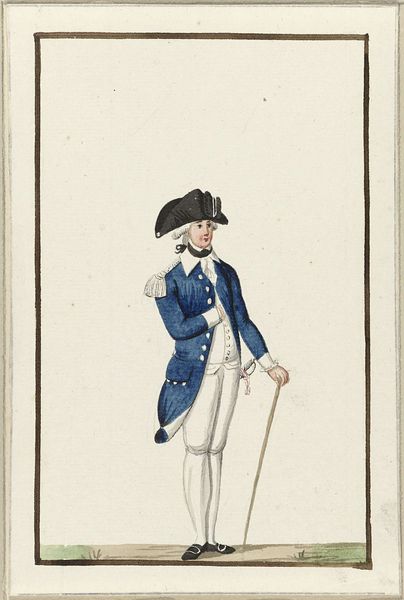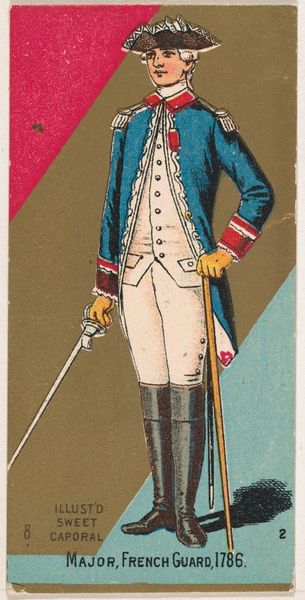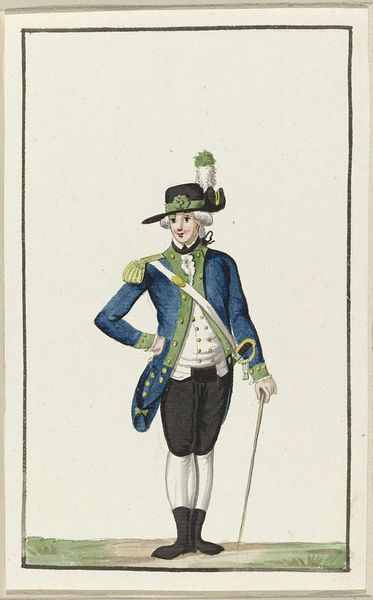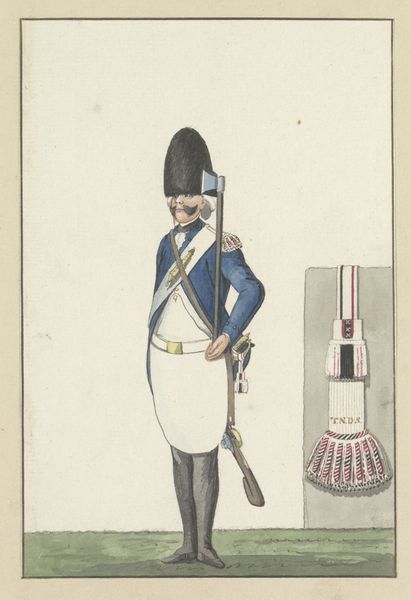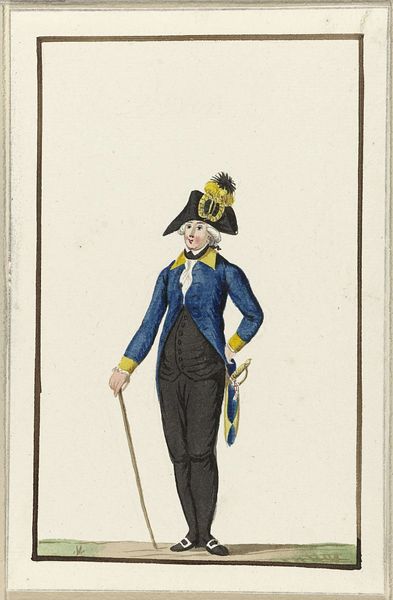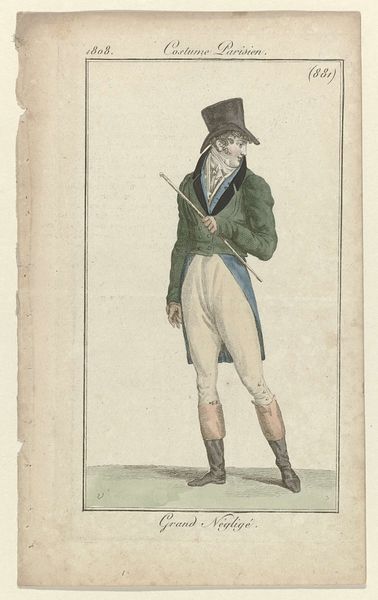
drawing, print, watercolor
#
portrait
#
drawing
#
neoclacissism
# print
#
watercolor
#
historical fashion
#
watercolour illustration
#
genre-painting
#
watercolor
Dimensions: height 206 mm, width 139 mm
Copyright: Rijks Museum: Open Domain
Editor: This watercolour and print from 1787, "Tamboer majoor van het Genootschap tot Nut der Schutterij te Amsterdam" or Drum Major of the Civic Guard of Amsterdam, is striking. The intense detail of the uniform suggests an immense amount of work. What’s your perspective on how it was made, and perhaps what that making says about its social context? Curator: Well, looking at the processes and materials provides crucial insights. Think about the labour involved in producing the pigments for the watercolour, grinding and mixing them, or in the engraving process of the print component. These were not off-the-shelf materials. Also, what does this highly ornamented uniform tell us about 18th century Dutch society and its consumption of luxury? Was it about creating prestige and what does the production mean to social cohesion and division in society? Editor: That's a good point; the act of creation reflects the social fabric of the time. How does the labour involved impact the value we ascribe to the artwork itself? Curator: Precisely! The handmade quality speaks to a different kind of value, one tied to skill, time and the deliberate artistic labor against an increasingly industrialized production. The labour and its traces evident on the work’s surface highlight tensions between traditional craftsmanship and emerging forms of mass production. Who was it made for? Editor: The fact that the image depicts a civic guard implies a sense of communal identity. So, would you argue the piece is also inherently about civic identity tied into displays of wealth through material means? Curator: It could be. Think about it: this isn't just a painting. It’s a material document reflecting power, social structures and values expressed through carefully selected pigments, engraved lines and countless hours. So what did you think of this method looking at this print/watercolour. Editor: Understanding the layers of labour certainly enriches my understanding of this, and any artwork, really. I'll definitely consider this process more in my work. Thanks for the insight!
Comments
No comments
Be the first to comment and join the conversation on the ultimate creative platform.

